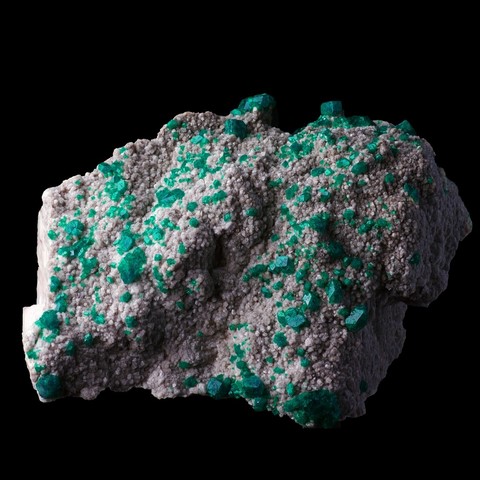 Dioptase - Encyclopedia
Dioptase - Encyclopedia
Class : Silicates
Subclass : Cyclosilicates
Crystal system : Trigonal
Chemistry : CuSiO3 . H2O
Rarity : Rare
Formerly confused with emerald because of its intense bluish green color, it has been defined and discovered by René Just Haüy. Dioptase comes from ancient Greek dia (through) and optadzo (vision) because its cleavages can be seen simply by transparency within crystals. It is a mineral species highly prized by collectors from around the World. It occurs in the oxidation zones of copper deposits under hot climates. Crystals are often elongated rhombohedra vertically striated and more rarely scalenohedra. Because of its low hardness and its easy cleavage, it is not very present in the jewelery sector, although faceted specimens were cut, they are often destined for collection.
Dioptase in the World

Dioptase in France
In France dioptase is anecdotal, it occurs in microcrystals in uraninite veins in red Permian clay schists, the deposit is located about 7 km south / southeast from Lodève in Hérault.
Twinning
There is a twinning plane for dioptase, however the samples are extremely rare.
Fakes and treatments
Among the fakes listed for this mineral, there are some assemblages, see our article about this on the subject: "assemblages".
Hardness : 5
Density : 3,38 to 3,35
Fracture : Conchoidale
Trace : Green
TP : Transparent to translucent
RI : 1,644 à 1,709
Birefringence : 0,051 to 0,053
Optical character : Uniaxial +
Pleochroism : Weak
Fluorescence : None
Solubility : Hydrochloric acid
Magnetism : None
Radioactivity : None





